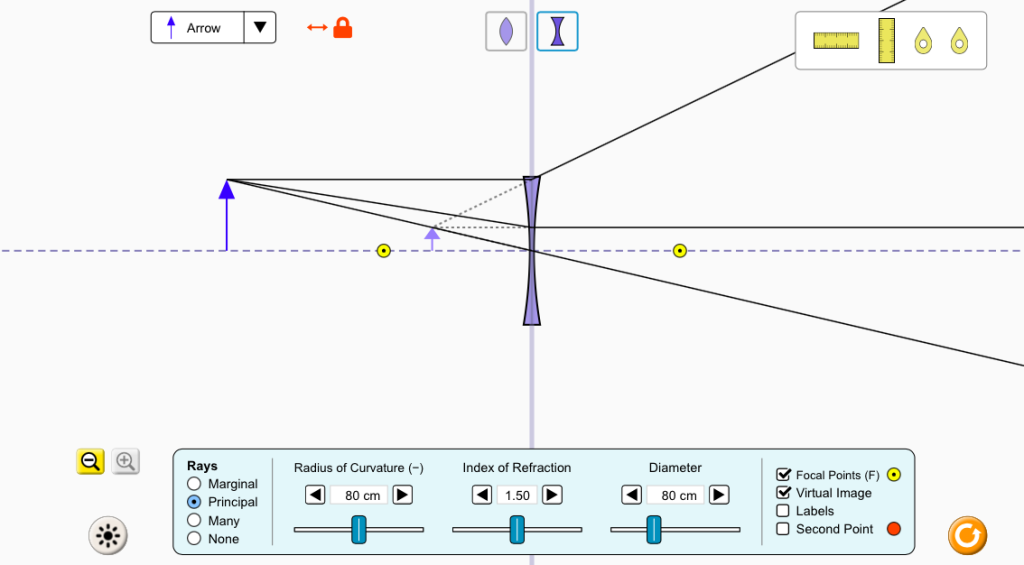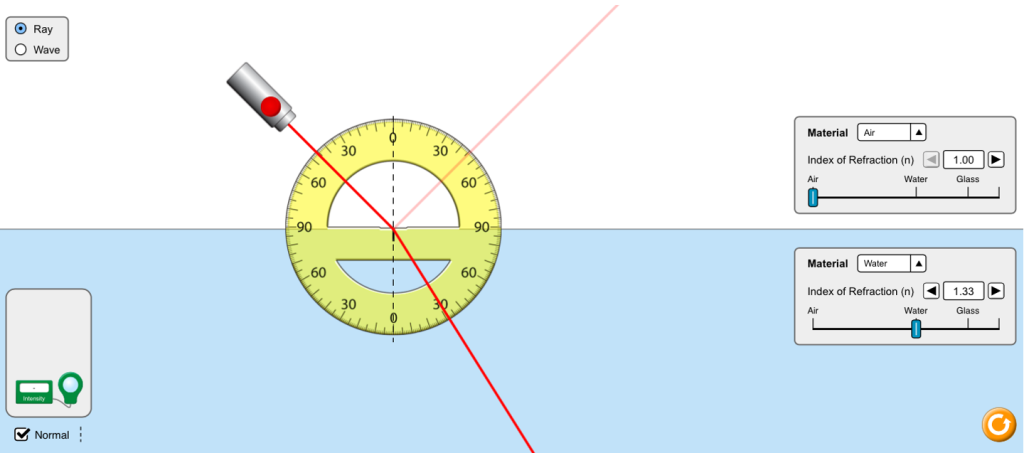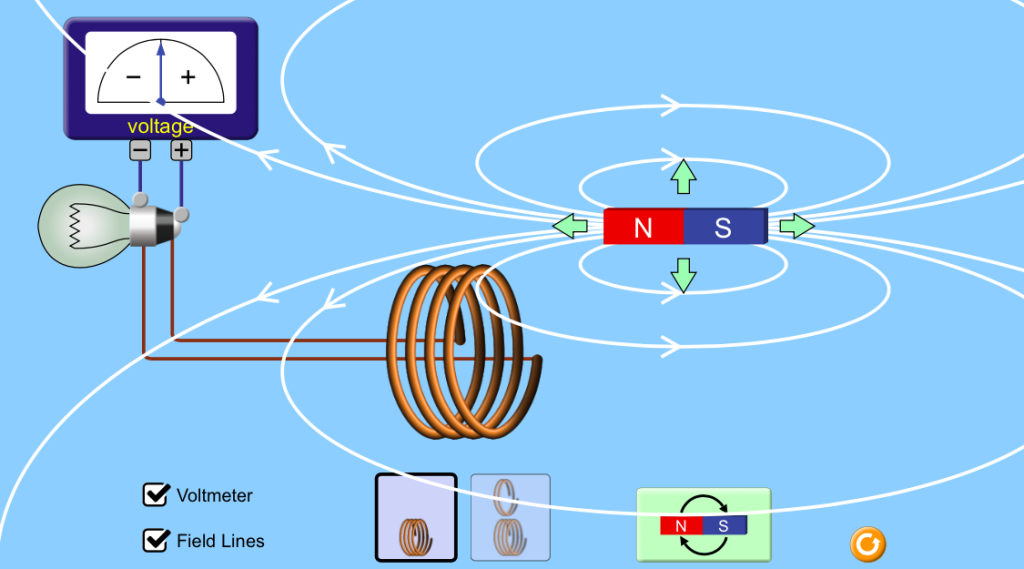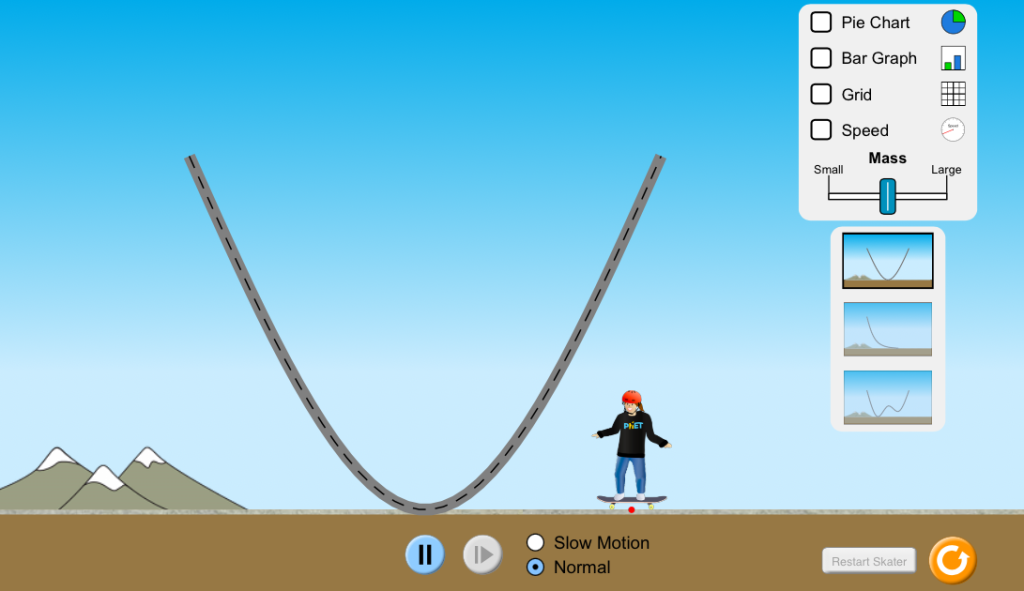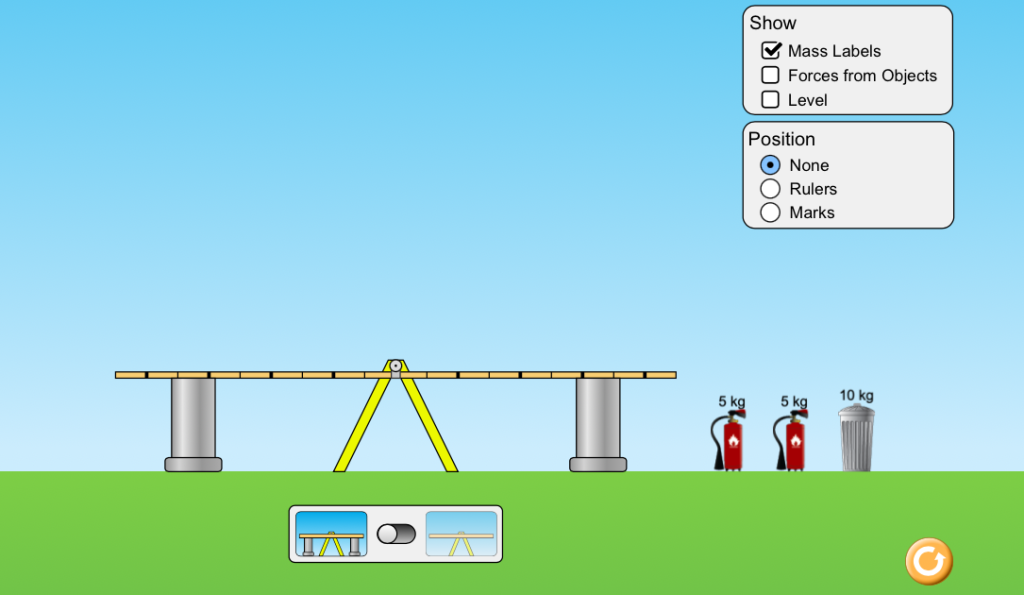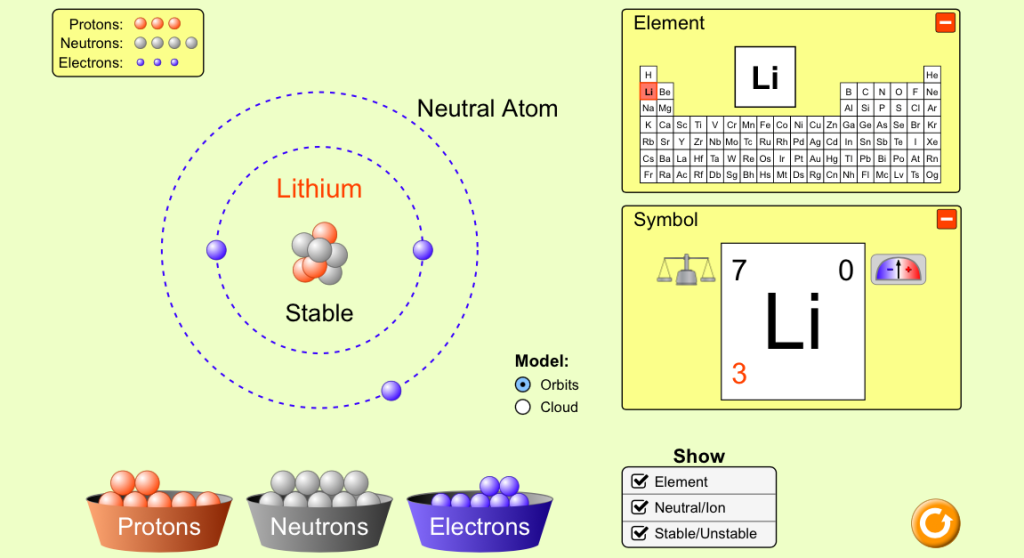Convex lens
Geometric Optics by PhET Interactive Simulations, University of Colorado Boulder, licensed under CC-BY-4.0 (https://phet.colorado.edu) The title of the Project: Convex lens Purpose of the work: Practical part Choose “Lens” to start the virtual experiment. This is a little instruction to the virtual experiment. Virtual experiment. Step 1. Choose settings at shown in the picture below. Step 2. Put the object outside of the focal point. Describe the image. The image is inverse, real, and larger than the object. Step 3. Put the object onto the focal point. There is no image in this case. The rays do not focus. Step 4. Put the object between the focal point and the lens. Describe the image. The image is upright, virtual, and larger than the object. Step 5. Make a conclusion. Conclusion The images from the convex lens change depending on the position relative to the focus point.


